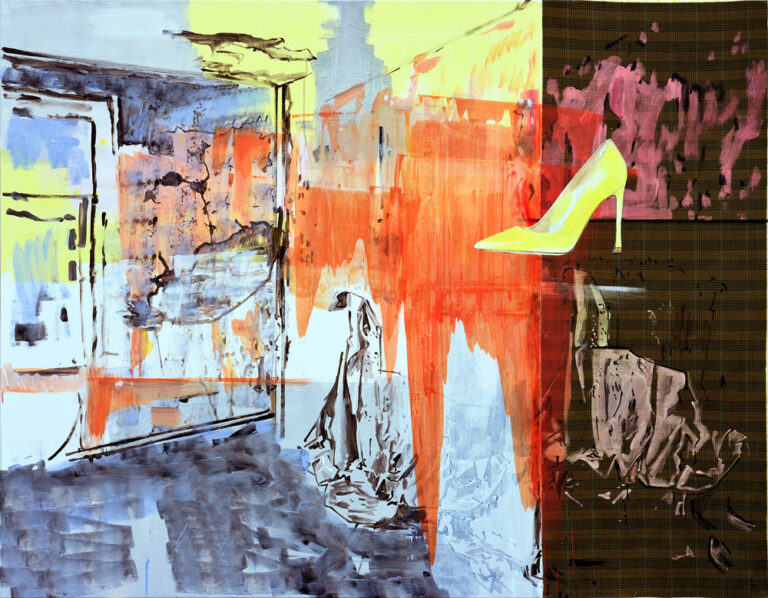
Ágnes Lörincz (1959), an artist who has been living in Germany since 1985, last exhibited her works in 2009.
One of the central themes of Lörincz's work is the projection of consumer society onto the individual, the world of advertising, fashion and lifestyle, and its social and political implications. His work mixes conceptual art, pop art and the "new wild". Her recent works, shown for the first time in Hungary at The Space, are self-reflexively infused with specific aspects of certain issues of women's roles.
Loneliness sleeps under the clothes her solo exhibition, the existential condition of loneliness and solitude, and its relationship to the external and material, which affects people of all ages and social strata today, is confronted in a contradictory way in her colourful, virtuoso paintings. On the one hand, our digital world has made it easier for us to communicate, yet man today is perhaps the most lonely in our history. As we have moved away from our roots and our existence in community, our connection to nature and our human bonds have become more superficial. Humans struggle with fears and beliefs, closing themselves off and trying to compensate for their abandonment with something: whether it be a desire to stand out, to escape into forced or substitute actions.
Lörincz mind szellemi, mind esztétikai értelemben merít a pop-art hagyományából. Harsány, tiszta színekkel festett, fogyasztói társadalom divatcikkeit és divatmagazinokat idéző képei lenyomatai a modern társadalom elidegenedettségének, mely egyben tiltakozás is az ellen. A képeken megjelenő magukba forduló alakok, a sematikus portrék vagy sokszor az arc nélküli, megcsonkított torzók egyedül töltik ki a felületet, elszigetelve magukat egymástól. A festményeken a test ábrázolása háttérbe kerül, a képek fókusza az üres ruházatokra kerül: a képkivágás, a festmények kollázs jellege és a festészeti elemek textíliákkal való párosítása, vagy éppen a ruhák részletei is ezt a külsőségektől fűtött elidegenedettséget tükrözik.
A kiállítás a Nemzeti Kulturális Alap támogatásával jött létre.

